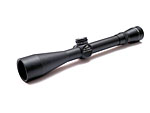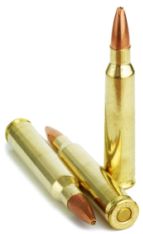(RANT) Stupid Self-Defense Ideas...
Link To Article
CRAIG, Colo. -- A 60-year-old Moffat County man was killed during a home invasion shootout in Craig -- except he was the one who was doing the breaking in with a gun.Stupid advice #1: Don't use a firearm that over-penetrates.
Police were dispatched to a home in the 800 block of Washington Street at about 5:40 p.m. on Sunday on a report of a home invasion. The 911 dispatcher told officers that shots could be heard from inside the home.
Officers found Mario Vigil lying on a floor outside a bedroom. He was pronounced dead at the scene.
The officers then found the homeowner, 33-year-old Josh Jackson, and his 9-year-old son hiding in a bedroom.
An investigation revealed that Jackson saw Vigil trying to break into the front door with the butt end of a rifle. Jackson grabbed a .410 shotgun and shot the intruder in the chest as he entered the home, but the shot did not stop him, police said.
Jackson and his son ran into a back bedroom and locked the door. Jackson told his son to hide under a bed and then grabbed a 30-06 rifle and started loading it. Police said the intruder then fired two rounds from a 30.30 rifle through the closed bedroom door.
Jackson yelled at him to leave and fired one round from his weapon through the bedroom door into the hallway. The intruder fired two more rounds and then began busting open the bedroom door, police said.
At that point Jackson fired another round, which apparently struck the intruder in the right hip area. The door remained closed and Jackson and his son stayed in the bedroom until officers arrived.
This is perhaps the dumbest thing I've ever heard. You're using a firearm for crying out loud! They're deadly force tools, not less-than-lethal tools. If you want those, get pepper spray or other such ineffective garbage. Why on Earth would you want to limit your effectiveness in a life or death situation? Because you fear that your missed shots will somehow travel elsewhere and hurt or kill someone else? Where are your priorities? On the psychopath 10ft away and 2 second from KILLING you, or on the well-being of your neighbors who could only be hurt by a virtually impossible one-in-a-million bullet hitting them due to penetration? What are the odds here? Your life and the life of your son in a room being killed, vs the safety of neighbors in an entirely different area?
Look, over penetration is an advantage, NOT a liability. - just ask the military why they use armor piercing ammunition.
People have fallen victim to the myths and bullshit perpetuated by idiot firearm instructors who fear litigation and by the police who'd like to see you have ineffective arms. These instructors think they're doing you a service by getting you all worked up over the aftermath of a shooting. Guess what? There won't be a fucking positive or negative aftermath for you to experience if you follow their stupid advice. You'll be zippered up in a body bag. Your choice.
As for the cops....they always advocate the most ineffective arms for civilians for a number of reasons. For one, they don't like you being better armed than they are. Secondly, they feel as though only their elitist and expert fingers are qualified to use such arms. (despite the fact that they far exceed civilians in firearm related accidents) Finally, they don't feel as though you have the capacity to successfully deploy a firearm in self-defense; after all, you didn't go to a 6 month police academy.
The last component of this rediculous advice stems from the police LIE about their choice of arms. At one time the police used MP5's, these are 9mm (medium power pistol cartridge) HK submachine guns. They've since largely switched to the AR-15 platform which fires a .223 Remington cartridge (a medium power rifle cartridge). The stated lie was that the 9mm penetrates interior walls much more than .223 which "fragments" quickly, thus posing less of a threat to innocents. This is pure bullshit. It has been extensively debunked that the .223 is not some sort of insta-frag bullet which stops after a couple layers of dry wall. The .223 is a serious cartridge that will penetrate well over 4 interior house walls. The real reason police switched is two-fold. One, the AR-15 platform is cheaper, you can arm 3 times as many officers than you would with the expensive MP5. Two, the .223 is far more effective and destructive to human tissue than the 9mm. That's right, they aren't seeking less effectiveness, they are seeking MORE effectiveness.
I won't even discuss the complete insane stupidity of ever using a worthless cartridge like the Glaser "safety" slugs in pistols. The only safety they provide is for the lunatic trying to kill you.
Stupid Advice #2: Gun Gadgets.
Look folks, in a life or death, high speed, high stress situation...you (on the defensive) will not have ANY use whatsoever for a weaponlight, laser, reddot, bipod, tactical grip or whatever other nonsensical garbage people put on rifles. Now, this stuff is great when the situation calls for it. In a New Orleans type disaster situation, that stuff comes in handy because you have the time and position to be able to deploy these tools, but when you have just mere seconds to respond and begin moving and shooting, you do not have time to turn on or use this crap. Cops use lights and lasers and all these gadgets because they have the time to turn them on in the armored personnel carrier just before they kick down a door and offensively assault a building.
Stupid Advice #3: Only shoot at what you can see.
That advice only applies to hunters, not to home defense situations. Note: I'm assuming you've ID'd that there is a real threat, I don't advocate you shoot at something or someone that might not be a threat. Gunfights are different:
There's only 1 rule to a gunfight: There are NO rules. Period.
People constantly think that you need to see your target before pulling that trigger. Bullshit I say. Look, you've got some armed psychopath in your home -- if you can guestimate that he's behind a door or a wall...OPEN FIRE. Sure you might miss, who cares! Shoot more! That's why it is essential that everyone obtain the highest possible capacity magazines. More = better. If you don't believe me, then just ask the military why they don't go back to single shot rifles. If you luck a hit - you win, or at least stay alive, which is the goal. The goal isn't to worry about your home's walls or furniture. Those are replaceable, you are not. Shoot, shoot, then shoot some more.
Stupid Advice #4: Any gun is better than no gun.
This is true. Especially in concealed carry situations where you are limited to what you can carry, and it is always better to carry than not to carry. However, in a home - there's no excuse to not use serious firepower. A .410 squirrel shotgun is useless. The 60 year old psycho in the article took one to the chest and carried on with his goal of killing the father and his son. The .30-06 took this dirtbag out quick. For home defense, shotguns are not the best choice. I'm going to write an entire article on why shotguns are aweful choices, but for now, they don't fire as quickly nor do they penetrate well enough for effective defense. Pistols are worse. The best choice is a semi-automatic rifle chambered in a medium to full power cartridge, with high ammunition capacity like the AK-47 or AR-15 patterned rifles. These are easier to aim, easier to shoot, offer rapid fire, excellent lethality, and have plenty of ammo to get the job done. Don't sell yourself short.
***
After reading a real-world situation like that linked article, where are all the "over penetration" idiots to come out and advocate the use of frangible ammo that wouldn't penetrate that bedroom door? Where are all the "tacticool" poseurs and mall-ninja commandos to come out and convince us that self-defense can not be obtained without a $600 flashlight mounted on your rifle? These people are not in touch with reality at all. Don't listen to these clowns. Use your common sense. Read about real home invasions to learn what really happens.





